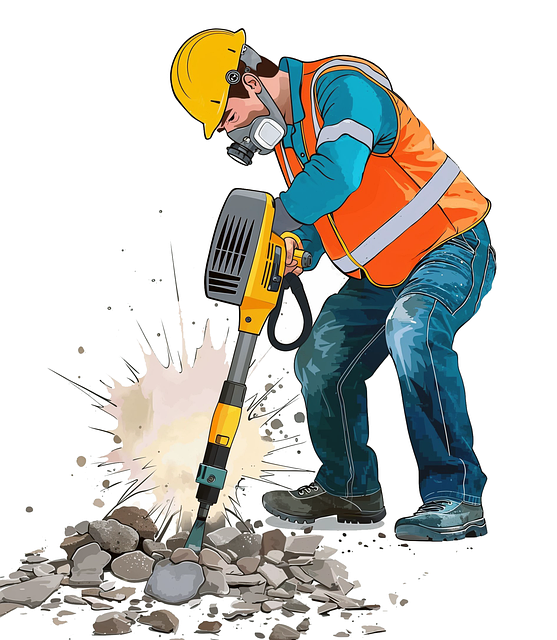Fast Results: Your Guide to Accelerating Workers’ Comp Claims in Albany
Filing a Workers' Compensation (WC) claim in Albany after an on-the-job injury involves understanding state laws, taking immediate action, and ga…….
In the dynamic landscape of labor law, understanding how to navigate workers’ compensation claims is paramount for both employees and employers. This article delves into the intricacies of filing a workers’ comp claim specifically in Albany, offering a comprehensive roadmap for those navigating this process. Albany, as a bustling metropolis with a diverse workforce, presents unique considerations when it comes to workers’ rights and compensation. By exploring various facets, from legal frameworks to technological innovations, readers will gain valuable insights into ensuring fair treatment and timely benefits for workplace injuries or illnesses.
Definition: Workers’ compensation, also known as workman’s comp or workers’ comp, is a form of insurance that provides medical coverage and financial protection to employees who suffer injuries or contract illnesses related to their jobs. In Albany, as in many jurisdictions, this system is governed by state laws and regulations, ensuring a structured process for claim filing and dispute resolution.
Core Components:
Eligibility: Employees covered under workers’ comp insurance are typically eligible to receive benefits if they sustain a work-related injury or illness. This includes accidents, repetitive strain injuries, and even occupational diseases.
Claim Filing: The process begins with filing a claim with the appropriate state agency (in Albany’s case, likely the New York State Department of Labor). This involves completing forms, providing medical records, and detailing the work-related incident.
Medical Care and Benefits: Approved claims entitle employees to necessary medical treatment and rehabilitation services, as well as partial wage replacement during the recovery period.
Historical Context: Workers’ compensation laws have evolved over a century, driven by labor movements advocating for better protection of workers’ rights. In Albany, these laws have been shaped by historical events, including industrial growth and labor strikes, leading to more comprehensive worker protections over time.
The concept of workers’ compensation has transcended national borders, influencing labor practices worldwide. Here’s a glimpse into its global impact:
International Adoption: Many countries have adopted some form of workers’ comp system, recognizing the need for social safety nets in case of job-related injuries or illnesses.
Regional Variations: The scope and administration of workers’ compensation differ significantly across regions. For instance, some countries have centralized systems managed by government agencies, while others rely on private insurance companies.
Trends Shaping the Future: Technological advancements, such as automation and remote work, are driving changes in workers’ comp claims. Global trends also include increasing focus on mental health benefits and recognizing new types of workplace hazards.
The economic landscape plays a crucial role in shaping workers’ compensation systems:
Market Dynamics: Workers’ comp insurance premiums are influenced by industry-specific risks, local accident rates, and labor market conditions. In Albany, varying sectors may experience differing claim frequencies and costs.
Investment Patterns: Insurers invest premium dollars into various pools, including medical care, legal reserves, and administrative costs. Effective management of these funds is essential for maintaining affordable coverage.
Economic Impact: Workers’ compensation benefits can significantly impact local economies, as they provide financial support to injured workers while ensuring their return to work when possible.
Technology has revolutionized the way workers’ comp claims are handled:
Digital Claim Filing: Online platforms allow employees to submit claims quickly and securely, streamlining the initial process. Mobile apps further enhance accessibility, enabling real-time updates on claim status.
Telemedicine: Virtual medical consultations enable faster access to healthcare professionals, especially in remote areas or during emergencies. This trend is expected to grow with advancements in telemedicine technology.
Data Analytics: Advanced analytics help insurers identify patterns and trends in claims data, leading to improved risk assessment and fraud detection. These insights can also inform workplace safety programs.
Wearable Technology: Devices like fitness trackers and smart watches can monitor employee health and activity levels, providing valuable data for workers’ comp claims and return-to-work assessments.
New York State’s workers’ compensation laws are detailed and comprehensive, ensuring fairness and protection for both workers and employers. Key policies and regulations include:
New York Workers’ Compensation Law: This law outlines the rights of employees and obligations of employers, setting guidelines for claim filing, benefit entitlement, and dispute resolution procedures.
Insurance Requirements: Employers in Albany are mandated to secure workers’ comp insurance covering their employees. The state’s Department of Insurance regulates insurers and ensures compliance with coverage requirements.
Benefit Entitlement: The law specifies the types of benefits available, including medical expenses, income replacement, and vocational rehabilitation services. It also defines eligibility criteria for temporary and permanent disabilities.
Dispute Resolution: New York employs a structured dispute resolution process involving claim reviews, hearings, and appeals. The State Workers’ Compensation Board administers these procedures, ensuring fairness and consistency.
Despite its benefits, the workers’ compensation system faces several challenges:
Claim Delays: One of the most common issues is the delay in processing claims, often due to complex medical evaluations and administrative backlogs. Implementing digital systems and streamlining procedures can help accelerate claim settlements.
Insurer Profit Margins: Critics argue that some insurers profit from lengthy claim processes and strict benefit limitations. Enhancing transparency and consumer protection measures can address these concerns.
Complex Case Management: Complex or permanent disability claims require specialized case management and medical expertise. Investing in trained professionals and modern assessment tools can improve these cases’ outcomes.
Proposed Solutions:
Digital Transformation: Adopting technology to automate processes, enhance data sharing, and facilitate virtual interactions can significantly improve efficiency.
Public Education: Educating employees and employers about their rights and responsibilities under workers’ comp laws can lead to better claim filing practices and fewer disputes.
Legislative Reforms: Reviewing and updating laws to address emerging workplace hazards and modern labor market trends ensures the system remains relevant and effective.
Scenario: A construction worker, Sarah, was severely injured while working on a high-rise building project in downtown Albany. Her claim involved complex medical issues and a lengthy recovery period.
Steps Taken:
Immediate Medical Attention: Sarah received emergency care at the site and was later transferred to a specialized rehabilitation center.
Employer Reporting: The construction company promptly reported the incident to the state workers’ comp agency, ensuring timely claim filing.
Claim Filing: Sarah’s attorney assisted in completing the necessary forms, providing detailed medical reports, and documenting the incident.
Dispute Resolution: The case proceeded through a series of hearings, where experts testified on Sarah’s behalf, ultimately resulting in a favorable decision.
Lessons Learned:
Scenario: John, a data analyst at a tech company in Albany, developed carpal tunnel syndrome due to prolonged keyboard use. He sought workers’ comp benefits for treatment and accommodations.
Steps Taken:
Medical Evaluation: John’s physician diagnosed carpal tunnel syndrome and recommended surgery, along with ergonomic modifications.
Claim Submission: The company’s HR department assisted John in filing a claim, providing all necessary medical records and job-related information.
Accommodations: With the approval of his claim, John received modified duty assignments and ergonomic equipment to prevent further injury.
Outcomes:
The workers’ compensation landscape is continually evolving, shaped by technological, economic, and social factors. Here’s a glimpse into the future:
AI and Predictive Analytics: Advanced AI algorithms can predict workplace hazards, identify at-risk employees, and enhance claim forecasting, enabling more proactive risk management.
Remote Work and Cyber Risks: With the rise of remote work, there is an increasing need to address cyber-related injuries and mental health issues arising from isolation.
Mental Health Benefits: Expanding mental health coverage in workers’ comp plans is gaining momentum, recognizing the growing importance of addressing workplace stress and burnout.
Alternative Dispute Resolution: Online mediation platforms could offer efficient, cost-effective alternatives to traditional hearing processes, potentially reducing backlogs.
In conclusion, understanding how to file a workers’ compensation claim in Albany is essential for both employees and employers. This comprehensive guide has illuminated various aspects of this process, from legal frameworks to technological advancements and global trends. By navigating the system effectively, individuals can ensure they receive fair compensation and necessary support during challenging times.
The future of workers’ comp claims promises exciting possibilities with technology and evolving workplace dynamics. As Albany continues to embrace innovation and adapt to changing labor market needs, its workers’ compensation system will play a pivotal role in fostering a healthier, safer, and more productive workforce.
Q: Who is covered under the New York State Workers’ Compensation Law?
A: The law covers nearly all employees in New York state, regardless of size or industry, as long as they are not independent contractors.
Q: What happens if my workers’ comp claim is denied?
A: If a claim is denied, you have the right to appeal. Contact your state agency or consult with a legal professional specializing in workers’ comp law for guidance on the next steps.
Q: Can I be fired for filing a workers’ compensation claim?
A: No. In New York State, it is illegal for employers to retaliate against employees who file valid workers’ comp claims.
Q: How long does it take to receive benefits after filing a claim?
A: Processing times vary, but the state agency aims to decide on initial claims within 20 days. Complex cases may take longer, and appeals can extend the process.
Q: Are there any limitations on the types of injuries covered?
A: Generally, all work-related injuries and illnesses are covered, including those arising from hazards typically associated with a job (e.g., construction sites) or new risks posed by modern workplaces.

Filing a Workers' Compensation (WC) claim in Albany after an on-the-job injury involves understanding state laws, taking immediate action, and ga…….

In Albany, NY, understanding Workers' Compensation (WC) is vital for residents injured at work. To file a claim, quickly notify your employer and…….